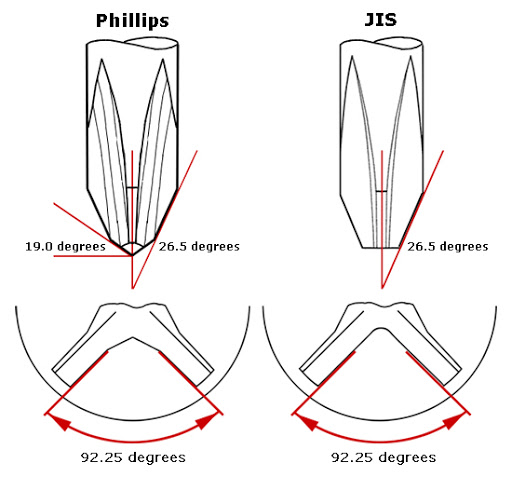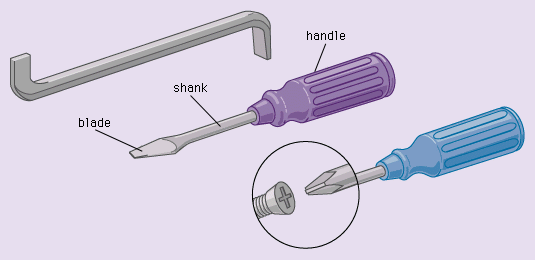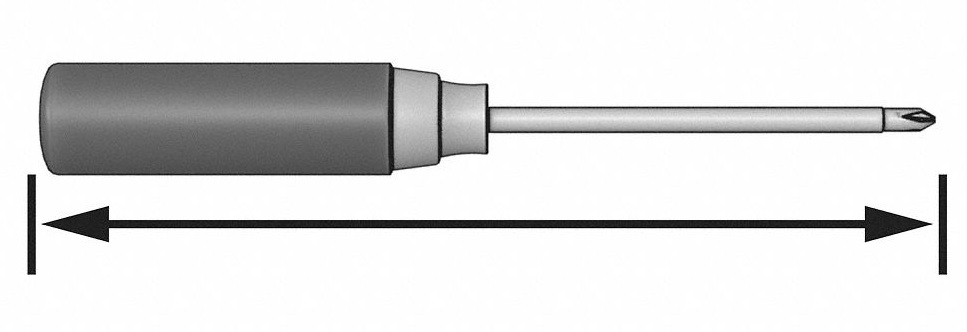In this paper, the mechanism and use of a screwdriver with a crosshead and a detachable tip will be described. As an instrument, a screwdriver is one of the essential instruments that are used commonly and are applied to repair multiple devices of a different level of advancement and complexity. Screwdrivers may differ in shape and size, as well as the presence of additional functions, such as the ability of a screwdriver to define the presence of an electric current in the mechanism when touching it (see Fig. 1). However, the basic definition of a screwdriver and the presence of the components that allow making the specified function as easy to implement as possible have remained mostly homogenous and unchanged over the past decades. The goal of this paper is to consider a screwdriver as an instrument, starting with its typical form, namely, that one of a tool with a crosshead. However, this paper also aims at considering a specific modification of a screwdriver that allows changing the tip.
Definition and Components
Although the concept of a screwdriver is fairly simple, it still needs a definition that could allow naming its main distinctive characteristics. According to the existing definition, a screwdriver is “a tool It is used to turn; it is cross-shaped; it consists of tip Tray A flat, shallow container with a raised rim” (Ge et al. 365). The specified description is consistent with the example of a screwdriver considered in this paper. The proposed definition of a screwdriver is aligned with the concept of one considered in this essay, namely, the idea of a screwdriver being used primarily to turn objects and having a cross-shaped tip.


As shown in Figure 2, despite a very basic sign, the manufacturing of screwdrivers with cross-headed top still involves certain differences between the end product offered by different companies. As a result, the efficacy of a cross-headed screwdriver may differ depending on the type of a screwdriver used for a specific purpose. Specifically, the drawing in Figure 2 shows that the existing variations in the design do not allow enough opportunities for maintaining the quality of the end result the same since even minor changes in the extent of the tip’s shape imply a change in the application of pressure, effort, and overall skill in screwing g a bolt properly.
Parts and Materials
A screwdriver with a cross head and a detachable tip consists of three key parts, which are the handle, the shank, and the tip (see Fig. ). The tip and the shank are made of metal, typically of steel, although variations of alloys may be used in the course of manufacturing (Office of The Federal Register 552). The shank is often chrome-plated for both durability and aesthetic purposes. In turn, the handle may be made of different kinds of materials. Presently, plastic is used most commonly in the creation of a handle, although wood is sometimes utilized for this purpose. To ensure that the shank is connected firmly to the handle, a metallic ferrule is sometimes attached to the device (see Fig. 3).
Despite the simplicity of the mechanism in question, its key parts may vary and include additional elements. As shown in Figure 4, there are only three key components of ay screwdriver, although the presence of different types of material used for each, as well as the fact that the tool in question is a part of a larger brand, thus, is constructed in a unique way, becomes apparent. In the target setting, disagreements rarely take place. Instead, the focus on applying the instrument to perform key actions is reinforced for a significant range of learners.

A steel shank fits snugly into the indent in the handle, allowing it to fasten the shank so that it could remain sturdy and perform the described function.
Mechanism Use
A screwdriver with a cross head and a detachable tip is typically used to perform operations involving driving screws. The detachable tip suggests that tips of different sizes can be attached so that the screwdriver could be used to handle bolts of different sizes. In turn, a cross head serves the purpose of driving the screws with linear intrusions across them.
The mechanism itself suggests that a tip of the appropriate size should be selected to fit the chosen screw. Afterward, the screwdriver is assembled by pushing the tip of the required size into the hole in the handle of the screwdriver. As soon as the tool is assembled, the top of the screwdriver is placed on top the head of the bolt so that the cross on the tip could fit the one on the bolt. After the screwdriver comes in contact with the bolt, it should be turned clockwise to fasten the screw in the selected position and counterclockwise to loosen the bolt and take it out of the specified position (see Fig. 4). Thus, when applied to a bolt, the screwdriver makes the bolt rotate due to the torque, which, in turn, can be amplified by a variety of issues, including the presence of a cross-shaped recess on the head of a bolt (see Fig. 4).
In addition, screwdriver can be used virtually in any scenario that involves turning a particular object in order to fasten or loosen it. The application of a screwdriver is a uniformly known process that does not change across communities and cultures. Therefore, to apply a screwdriver to a specific issue, one should position its tip against the bolt so that the indents in the latter coincide with the cross on my father’s cross-cultural product integration.

The example provided above shows that a reusable tip allows for a greater grip on the bolt that needs to be fastened or removed. As a result, the efficacy of applying a screwdriver increases, as multiple uses of the tool in question have shown. Unfortunately, it is also not uncommon for people to be unaware of the differences between the reusable tip and changeable one, which reduces the efficacy of screwdriver application and may lead to poorer outcomes (Williams et al. 267).
Despite the multitude of functions described above, a screwdriver has one primary function, namely, that of fastening and unfastening screws. A screwdriver manages the described tasks very effectively due to its shape, materials, and the presence of the components that make it effective in using it for its main purpose. Remarkably, although screwdrivers come in a variety of shapes and sizes, the traditional shape that suggests a pyriform plastic handle, a long shank, and a tip that can be detached according to the task that it is supposed to implement.
The integration of its traditional function with those that innovative technologies have allowed it to has made a screwdriver more advanced, yet they did not allow it to become a truly multifunctional tool, only updating it. As a result, the opportunity to change tips as the means of adjusting them to a specific objective and fitting the exact size of a specific bolt remain the core functions of a screwdriver in contemporary households.
Conclusion
Being used in multiple projects and tasks, a screwdriver is a very basic tool with a handle, a tip, and a shank. A screwdriver should be used when the need to screw of unscrew a bolt arises, although other functional applications of a screwdriver may also emerge. A screwdriver has a crucial role in most households, allowing an individual to fasten a specific construction, as well as gain access to the components of a certain device to perform a routine action, such as changing batteries. Therefore, the significance of a screwdriver as a commonly used yet often overlooked device needs to be emphasized. Once its role and especially its multiple functions are acknowledged, a screwdriver is likely to undergo even more challenging alterations, leading to a massive change. Therefore, it is central to the efficacy of the tool’s performance to be able to recognize the difference between different types of tips and be particularly aware of the opportunities that a detachable tip provides. Likewise, the unique characteristics of a cross-head screwdriver are to be taken into account when fastening screws and bolts.
Works Cited
Ge, Shuzhi Sam, et al., eds. Social Robotics: 10th International Conference, ICSR 2018, Qingdao, China, November 28-30, 2018, Proceedings. Vol. 11357. Springer, 2018.
Office of The Federal Register. 2018 CFR Annual Print Title 21 Food and Drugs Parts 800 to 1299. IntraWEB, LLC and Claitor’s Law Publishing, 2018.
Williams, Bryan, et al. AQA GCSE (9-1) Design and Technology: Electrical and Mechanical Systems and Components. Hachette UK, 2017.